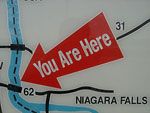Finding Local History Resources
Question

I have been unable to find teaching materials and/or curriculum for the teaching of local history. Our small town has a very rich history, including being the place where Lewis and Clark joined together to form their expedition, and the town that is the oldest American town in what was the entire Northwest Territory. It is also the site of the only home that George Rogers Clark ever owned. We also have extensive archaeology of Archaic, Woodland, and Mississippian periods.
We would like to incorporate teaching our town's history into the curriculum of grades K-5, but find no curriculum help or materials to do so.
Answer
Learning history through a local lens can be an engaging and powerful way to study the past. It sounds like your town (in Indiana, I presume?) has a rich history to mine with elementary students. For curricular resources, first try local museums, libraries, and historic sites. Their local collections often have interesting and evocative primary sources and orienting secondary material that can be curricular building blocks.
Some of these local institutions even provide lessons, resources, and field trips designed especially for the K-5 classroom. See this site's Museum and Historic Sites search for locating institutions near your community.
But even without specific curriculum, repositories of historic photographs, documents, maps, and other sources can get you well on your way to creating classroom plans.
Here are some tips for creating local history curricula for the elementary classroom:
Remember your state's standards—these can help you identify important topics, themes, and concepts at each of the grade levels. (Click here to search state standards.)
Timelines and maps are invaluable tools for helping students of all ages study history. From using a timeline to understand photographs that show a changing town landscape to using maps to understand settlement patterns, these tools help young students locate primary sources in concrete ways and read and analyze these sources. Connections between local and regional or national events can also be more transparent for students when timelines and maps are compared. For instance, compare a timeline of national events with a timeline of local events to help students see these connections.
Guiding questions are important. Use them to help students read and look carefully at sources and consider the significance of what they see.
Remember that walking tours can help students engage with the past. Seek out local history experts to help you identify promising sources, stories, and sites.
Use existing curricula and lesson ideas on this site to help you plan questions, activities, and lesson structures. For example, see this teaching guide about reading historic photographs closely and using them as doors into larger historic questions, or this video for a teacher who uses walking tours to help students learn their local colonial history. And don't forget to explore our Primary Source Guides. The entry about the National Parks Service may be especially helpful.
Other national organizations also provide resources for teaching local history. See the Regional Education Resources of the National Archives, National History Day's state pages, and a list of resources from the Library of Congress's American Memory site. Finally, the New England Flow of History project has some teaching ideas and resources that can be helpful.
Please come back and tell us about your successes and challenges—this is a topic that is important to many educators!
